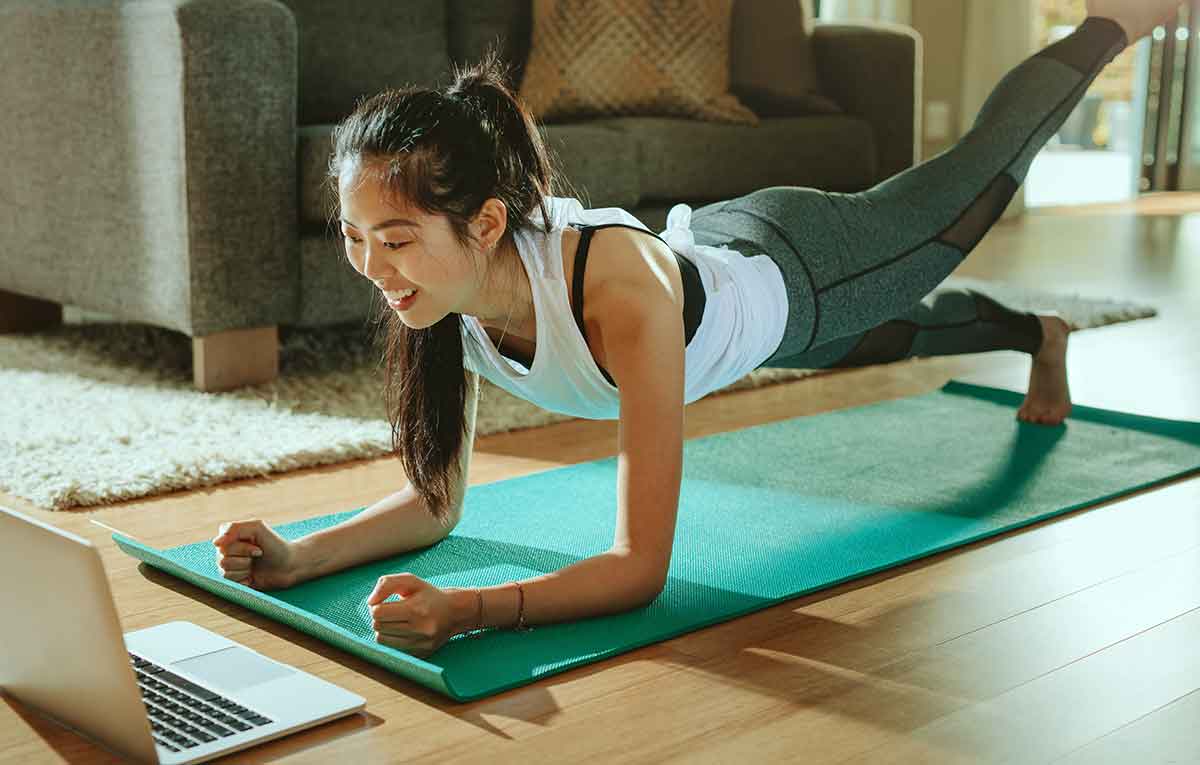“Shelter In” for COVID-19 Does Not Mean Sit Around
In the wake of COVID-19, we have come to find our actions restricted slightly. It is possible that you live in one of the many states that have implemented some form of a “shelter in” plan, where public activities are limited to necessities and other essentials. While it may be easy to focus on what we cannot do, I encourage you to focus on things within your control and what you can do.
Our routines have changed, temporarily. So it is important to create a new structure or routine, filled with various activities. Create a schedule, where each day has at least one different activity for the day. Work, school work, meals, social time, family time, individual time, creative/artistic time, relaxation time, and movement can all be worked into your weekly schedule. Blocking time for each of these helps reduce the likelihood that you will tire or get bored of an activity.
Movement is one area that would be helpful to have in your weekly schedule. Humans are meant to move. Sedentary behaviors, or sitting for the majority of your day, with little activity, may increase the risk of heart disease, among other things (Owen et al., 2010). Currently we are spending more time in the home due to COVID-19. Think back to your routine before this outbreak. How much walking did you do in your day? Did you walk around the office, in between tasks? Did you take breaks to socialize? Did you or your kids walk from class to class or engage in sports? Did you go to the gym, take a yoga class, or walk/run outside? Now compare that to your daily routine right now. Do you notice a difference?
The Department of Health and Human Services created the second edition of Physical Activity Guidelines for Americans in 2018. They recommend, for adults, anywhere from 150-300 minutes of moderate exercise on a weekly basis. Or you can do 75-150 minutes a week of vigorous physical activity. They also suggest incorporating at least two days of muscle strengthening (U.S. Department of Health and Human Services, 2018).
Exercise is shown to have many benefits for the body and also the mind. Exercise can lower the risk of heart disease, stroke, and blood pressure to name a few. It can improve metabolism and the immune system. Mentally, it can help reduce symptoms of depression and anxiety (Weir, 2011). Movement could help reduce fatigue, sadness, and stress, while increasing energy levels over time. To gain the benefits of movement, it will be important for you to make that part of your day. Take mini breaks from a work or school task and engage in some form of movement. Walk around the house, climb some stairs, or go for a walk around the block (while keeping social distancing orders in mind). You can do some push-ups, sit ups, or jumping jacks inside the home for a few minutes. Or set aside time in your day for physical activity of some kind for 20 or 30 minutes. Many local gyms are posting things for free online as well, so you can choose a new yoga or pilates class to try. Don’t forget that movement is fun! Dance to a song, play a movement related video game, or play ping pong. You can do movement breaks throughout the day or in one chunk of your day, but just remember to move.
References
Owen N., Sparling P.B., Healy G.N., Dunstan D.W., Matthews C.E. (2010). Sedentary behavior: Emerging evidence for a new health risk. Mayo Clinic Proceedings, 85, 1138-1141.
U.S. Department of Health and Human Services. Physical Activity Guidelines for Americans. 2nd ed. Washington, DC: U.S. Department of Health and Human Services; 2018.
Weir, K. (2011). The Exercise Effect. Monitor on Psychology, 42 (11), 48.

